Bandai Namco’s Tales action role-playing series is normally pretty formulaic — a plucky group of colourful heroes joins together to save the world from some dire threat. Tales of Berseria‘s protagonist just really wants to murder a guy, and her companions are happy to help.
The 16th main Tales game begins innocently enough. Velvet Crowe and her younger brother Laphicet are saved by her brother-in-law Artorius from a demonic event known as the Scarlet Night, which claims the lives of their older sister and her unborn child. Years after the incident the three are living together as a family. When Velvet isn’t doting on her sickly younger brother, she’s trained by Artorius in the art of battle. Life in their small village is quiet and peaceful.
But then the Scarlet Night returns, and everything goes to hell.
Flooded with malevolence, the villagers change into raging demons. Searching for her brother amidst the chaos, Velvet arrives just in time to see Laphicet sacrificed by her brother-in-law as part of some mystic ritual. When Artorius turns on her she fights back, only to be consumed by the Demonblight herself.
Velvet transforms into a demonic creature, slaughtering her fellow villagers before being dumped into a dank pit of a prison. After three years devouring hapless demons dropped into her cell by her captors, Velvet escapes, and she is not happy.
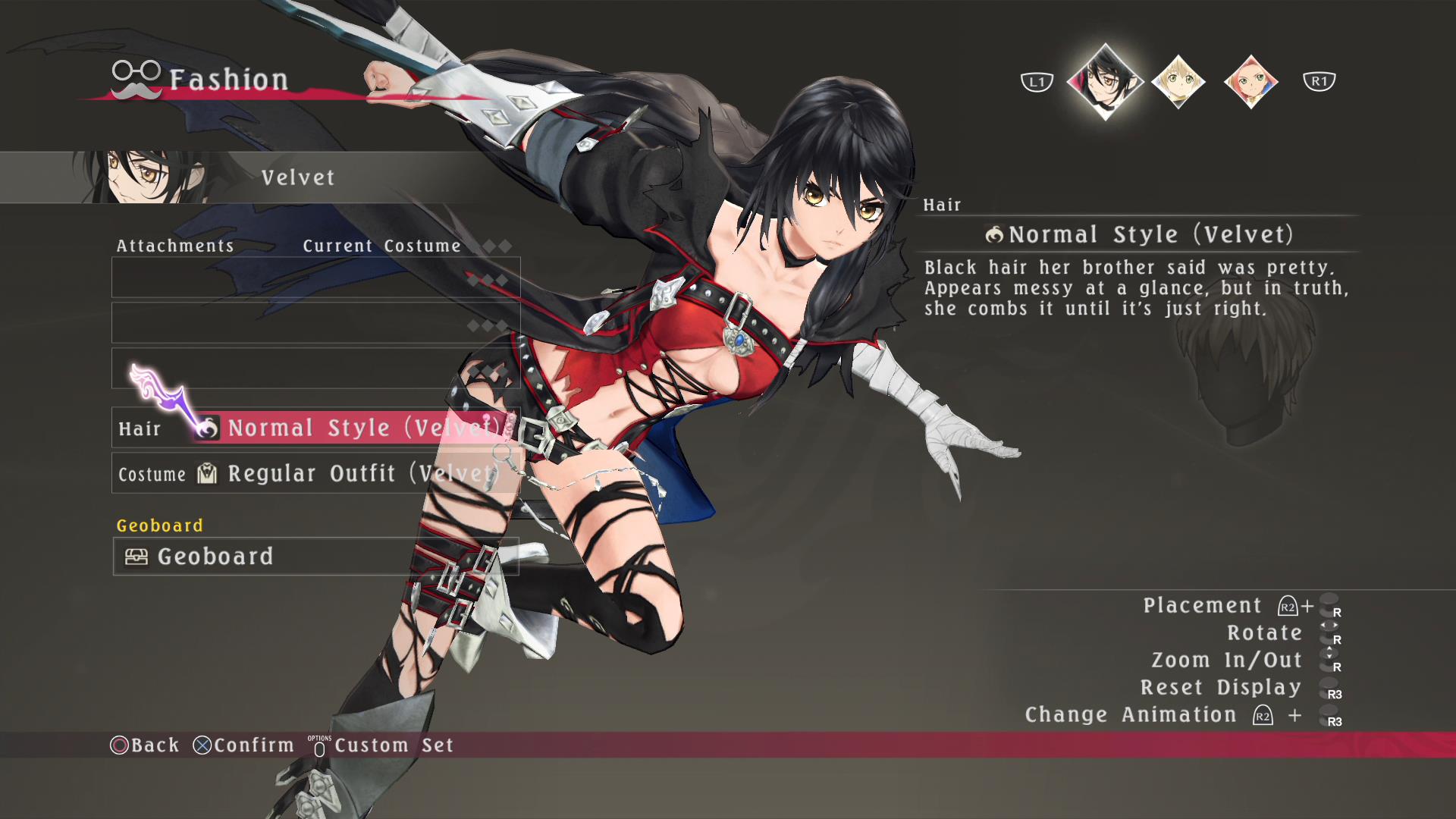
Not bad for an outfit cobbled together from prison rags?
Velvet is the first solo female protagonist in a main series Tales game, and she is not fucking around. She wants revenge on the man who killed her brother, and she will not let anything get in her way.
For example, during her prison escape she sets the rest of the prisoners free in order to create a diversion, keeping the guards busy in the front while she slips out the back. Do the freed prisoners get slaughtered? Yes they do. Does she give a damn? No she does not.
Nor does she care that in the three years she’s been in prison, Artorius formed the Abbey and established the Exorcists, humans who enslave magical beings known as Malakim to help battle demons. He’s brought a new era of peace to the Holy Midgand Empire, but as far as Velvet is concerned he’s just a man she’s going to kill, repercussions be damned.
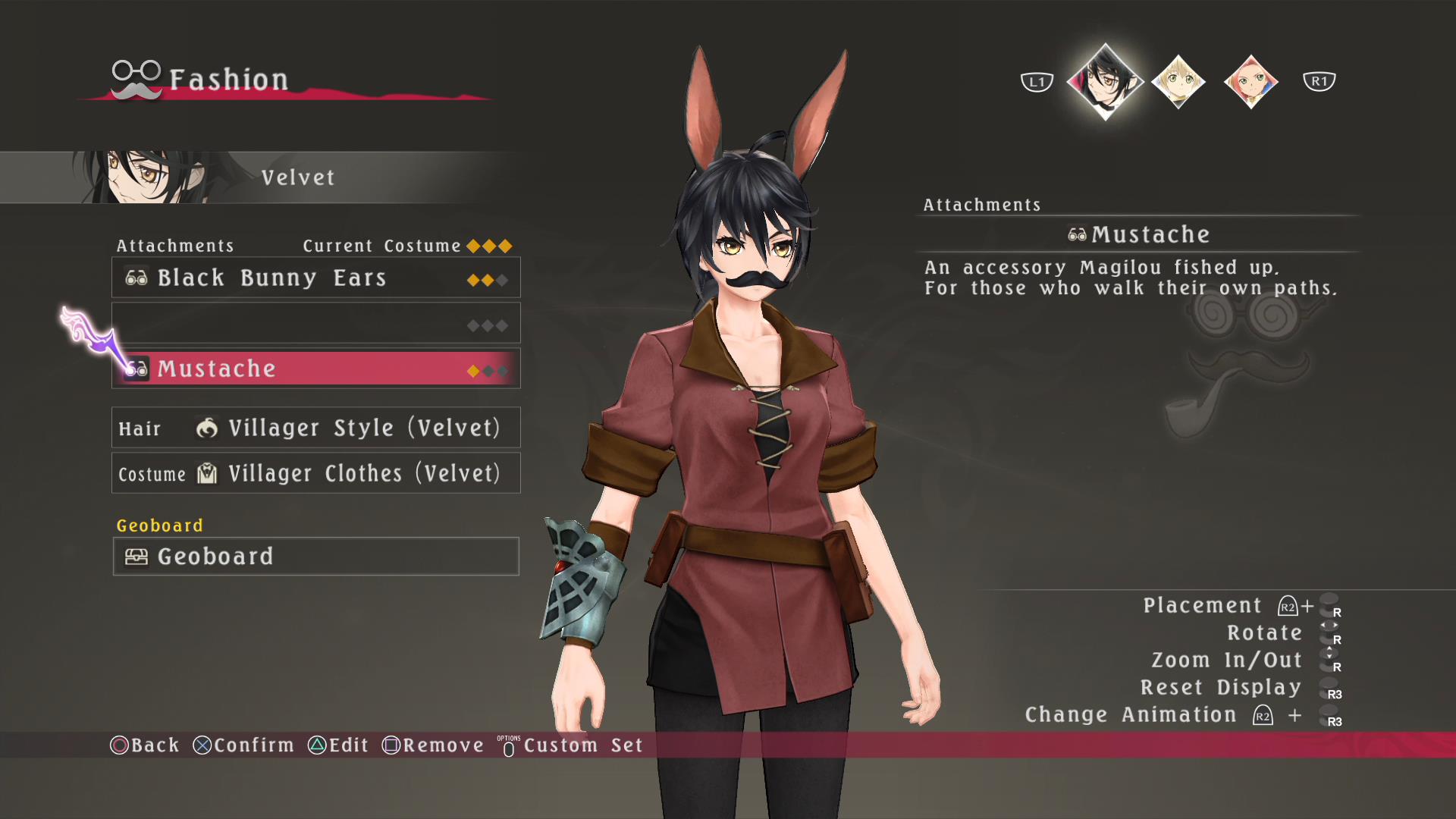
If you’re really bothered by the skin, alternatives are available through the game’s fashion menu.
As with every Tales game, Velvet slowly gathers a party of adventurers to her side, but they aren’t your average heroes either. There’s a demonic swordsman who pledges himself to Velvet’s cause after she helps him retrieve his beloved weapon, a self-serving witch who’s a little on the insane side, a cursed pirate and an Exorcist whose reasons for joining the team might not be on the up-and-up.
My favourite party member by far is a young Malakim the group frees from Abbey enslavement. Originally known as Number 2, he reminds Velvet of her dead brother, so decides to call him Laphicet, which is totally healthy and couldn’t possibly traumatize anyone.
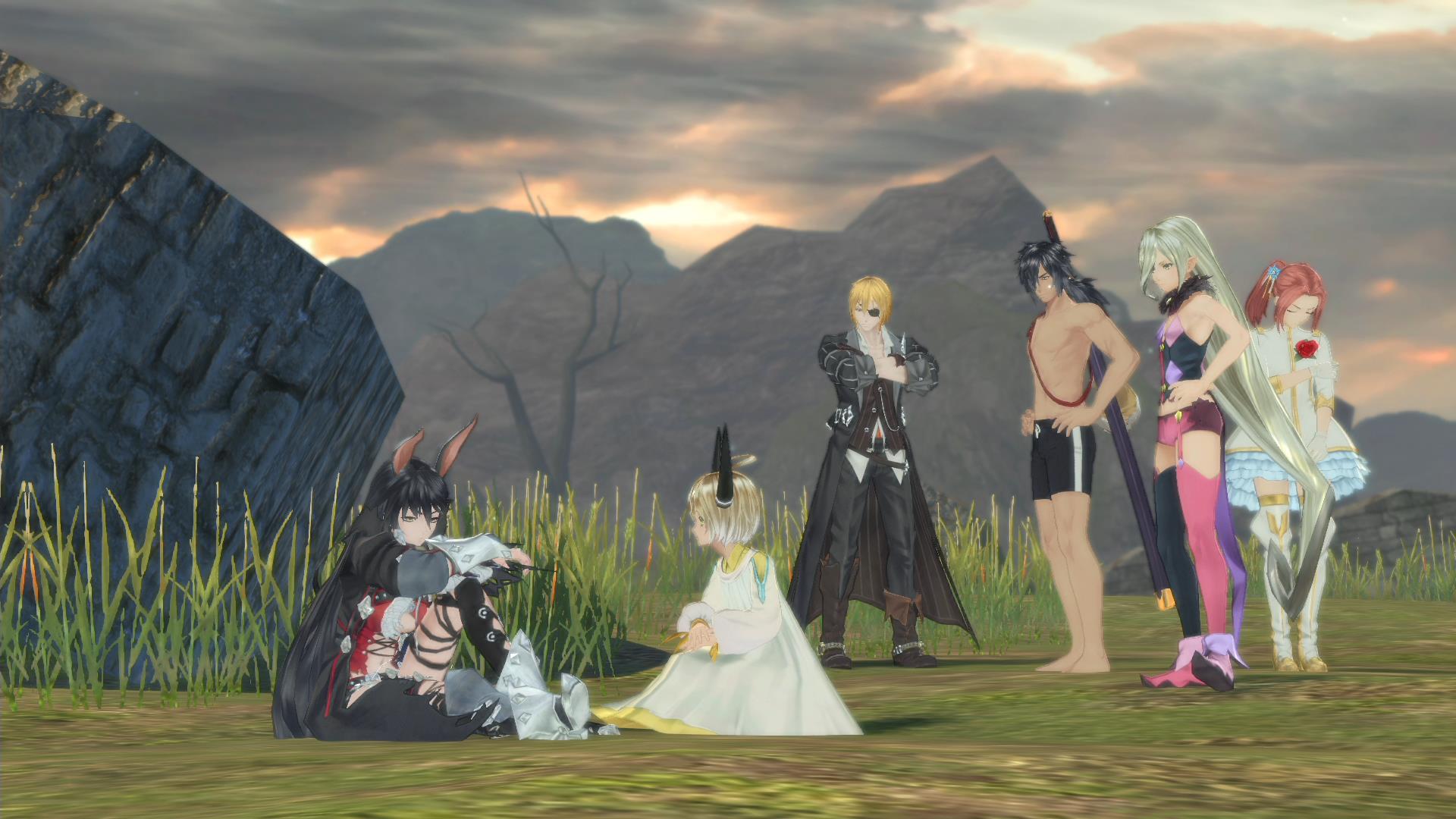
From left to right: Velvet, Laphicet 2, Eizen the pirate, Rokurou the swordsman, Magilou the witch and Eleanor the reluctant exorcist. I may have changed some of their clothing.
If you’re expecting a story in which a woman filled with rage and hate and the need for revenge sees the futility of her ways early on and dedicates herself to a noble cause, Tales of Berseria will surprise you. The game’s theme is reason versus emotion, but reason gets its arse kicked more often than not. This is not a group of good people doing good things. This is a group of people who aren’t too worried about setting the odd coastal town on fire to make a clean getaway.
Velvet and friends’ rough edges do soften eventually, but it’s a lengthy process that unfolds over a couple dozen hours via cutscenes and the series’ signature 2D conversations.
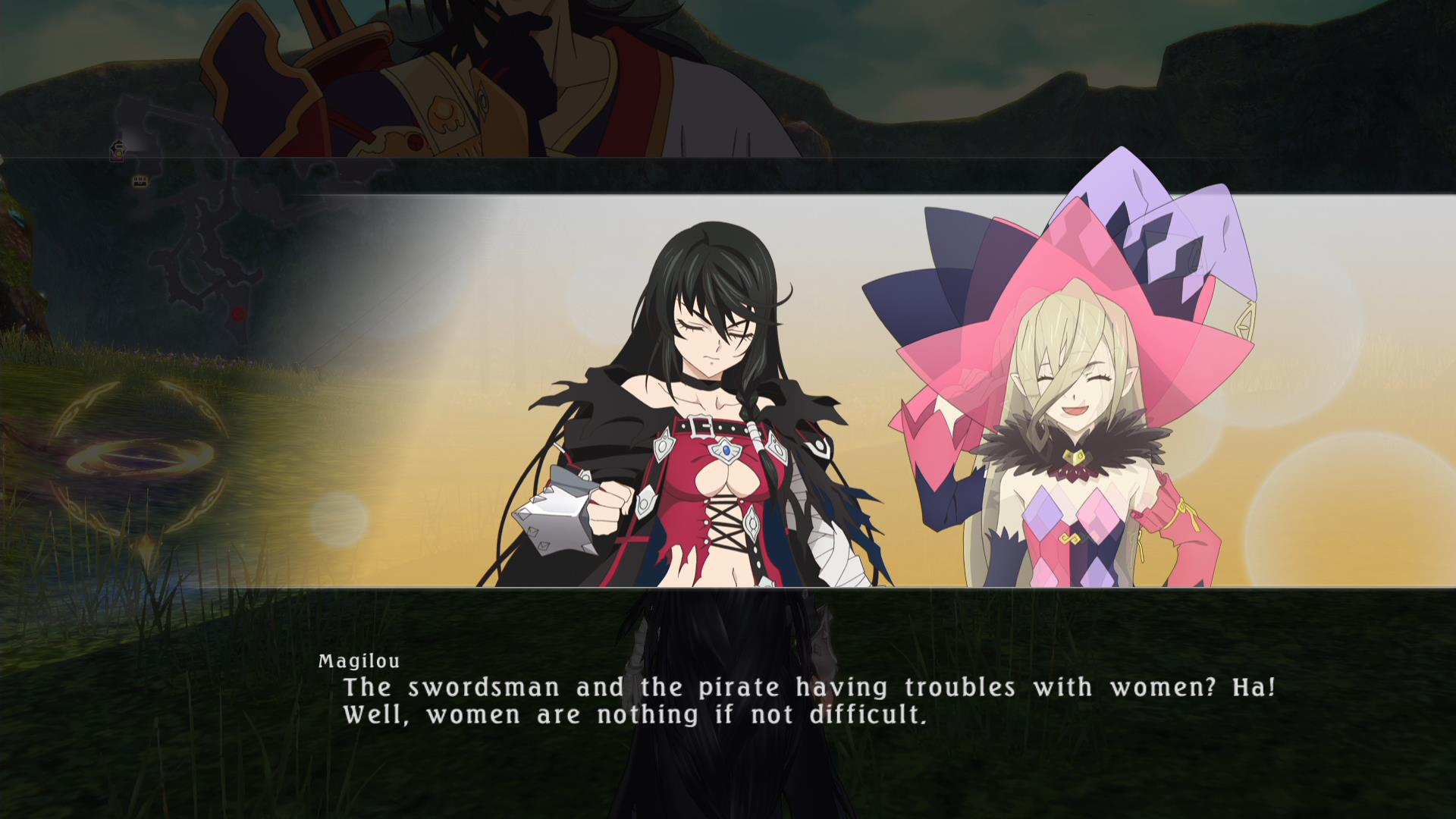
It’s an emotional journey draped in darkness, and it makes the characters in Tales of Berseria some of the most compelling the series has seen. It’s a group of loveable rogues. Loveable, murderous rogues.
And they’re murdering things in a lovely new way. Tales‘ signature active combat system, the Linear Motion Battle System (LMBS) is a bit more liberated this time around, allowing the players to roam freely about the field and rotate the camera around the action while in battle.
The free movement is important, as the game’s Soul Gauge system depends on it. The Soul Gauge is a series of five dots that determine how many actions a character can take in battle. Performing special attacks or getting hit with certain enemy attacks will take dots away. Exploiting enemy weaknesses puts them back. Dodging enemy attacks at just the right point can cause Souls to drop on the field, ready for pickup.
There’s also a Blast Gauge that counts up from zero. Expending one level of Blast allows the player to swap in reserve characters if there are more than four in the party. Expending three triggers a flashy special attack. You can see that in action in the video below.
Past that, it’s all pretty familiar Tales stuff. Each character gains new skills and magical artes as they level up, which can be lined up via menus for one-button combos. Characters controlled by AI can be programmed with situational commands to give the player a little more control over the battlefield. Not feeling like hitting buttons during combat? Set your character to auto and eat a sandwich while they fight for you. Everybody likes sandwiches.
It’s a fun battle system that gets better and better as you play, layering on modifiers and special skill chances and the ability to keep a running battle grade bonus. In the early hours of the game I was actively avoiding combat whenever possible. By hour thirty I was seeking it out.
What I never quite got used to was Berseria‘s equipment system. I love the idea of equipment that allows characters to master it through combat, permanently adding its Master Skill to the character’s repertoire. It’s just the equipment falls like rain off of the enemies you battle, with more powerful items arriving much faster than the old stuff is being mastered.
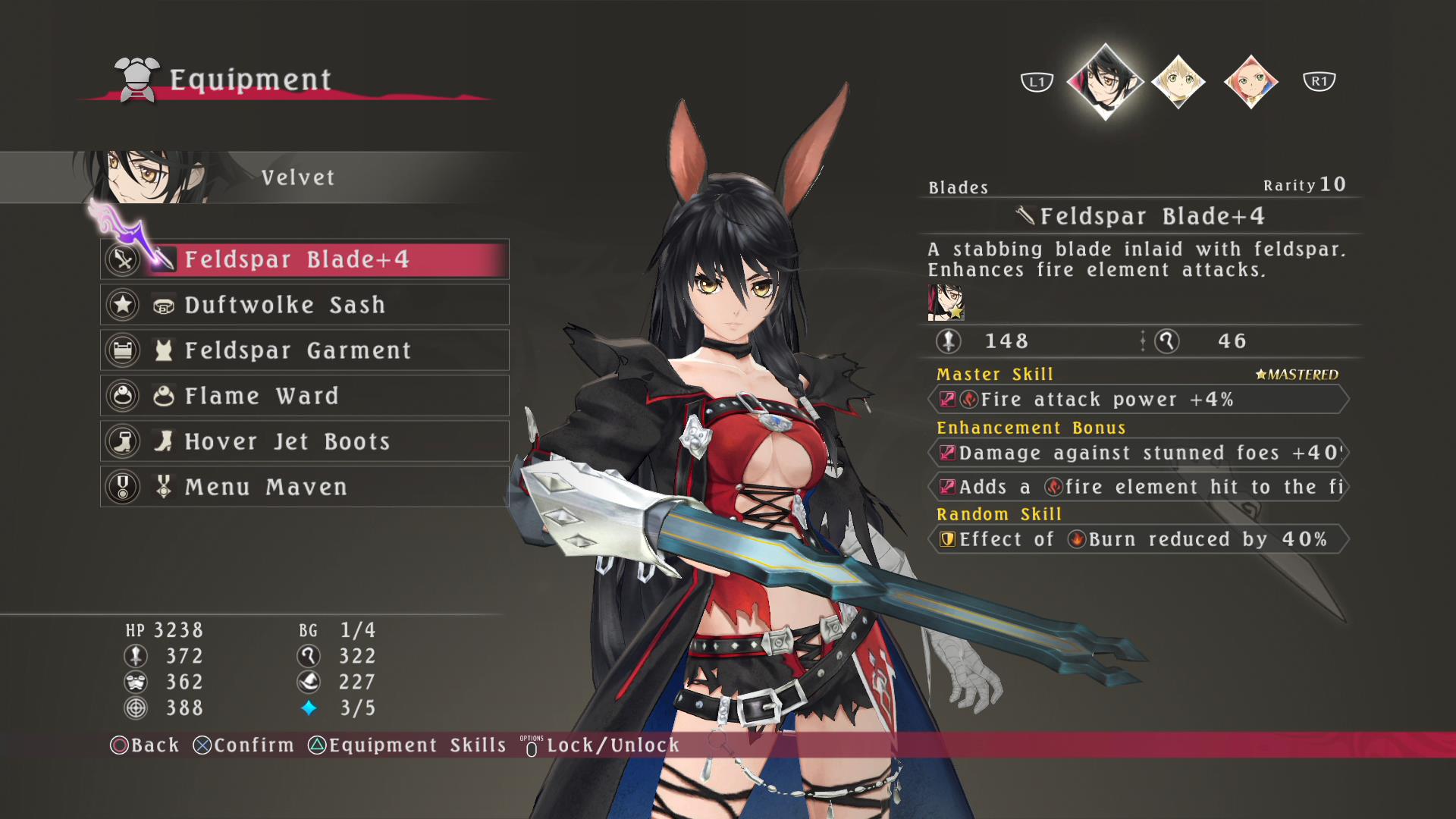
The idea is the player breaks down all the extra equipment in order to harvest materials needed to enhance their existing pieces, but that’s just another layer of stuff to keep track of, when I just want to see Velvet killing things. A more patient player will probably get much more out of it.
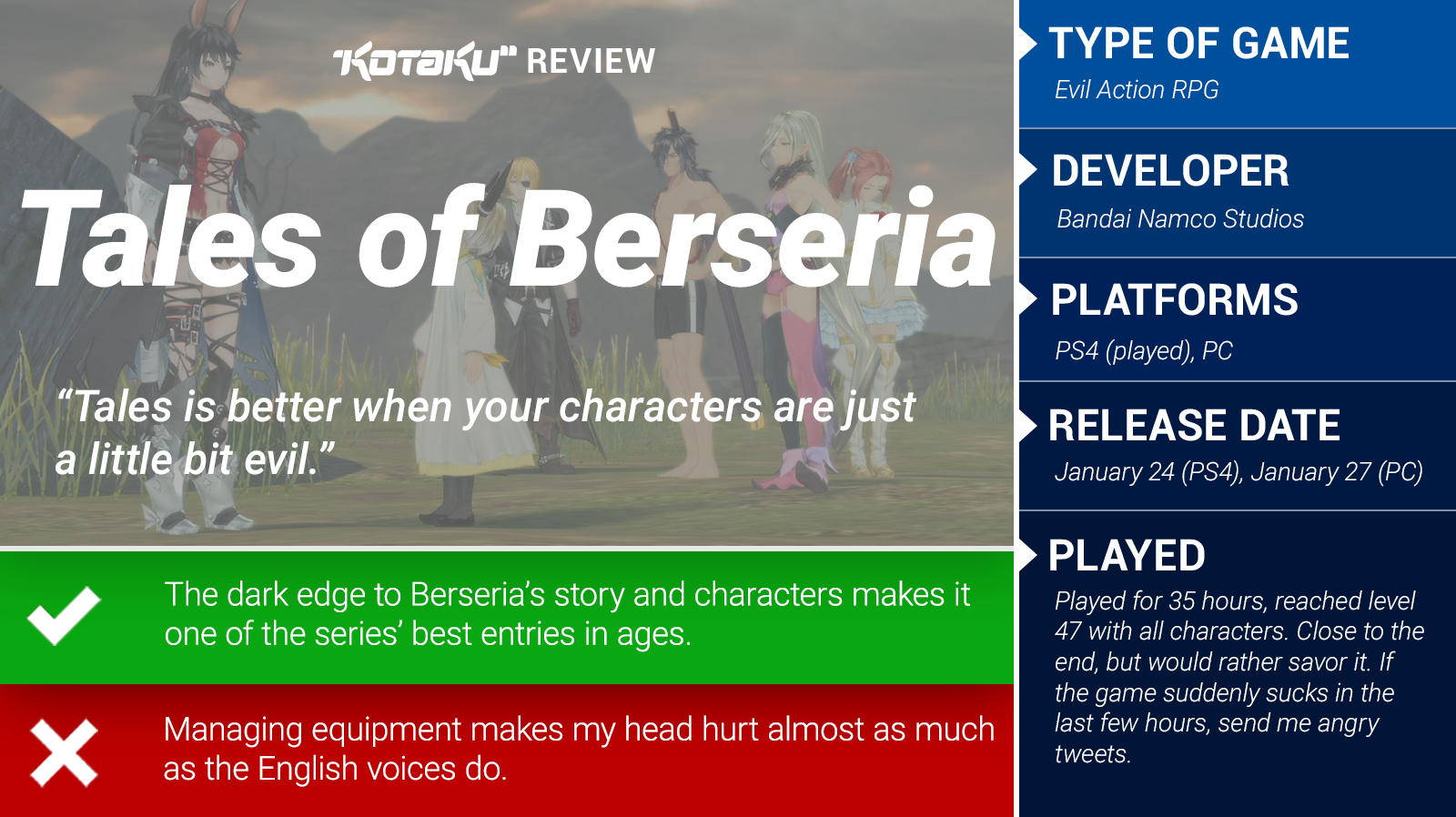
Tales of Berseria can be a very pretty game. Not quite PlayStation 4 pretty (the Japanese version was released on PS3 as well), but it does quite well. The characters always look nice, especially Eizen.
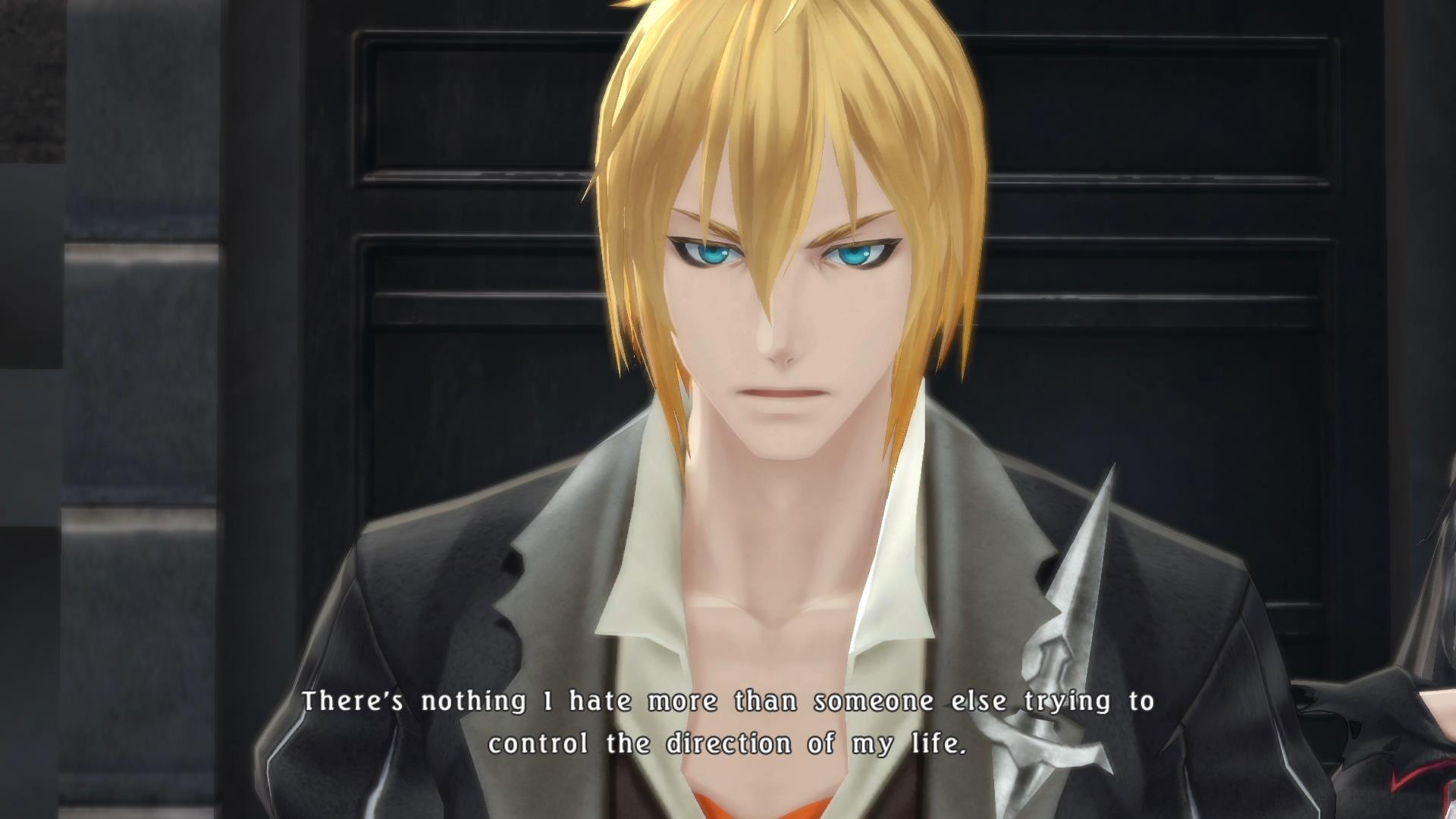
I may have a bit of a crush on Eizen.
The scenery has its moments as well.
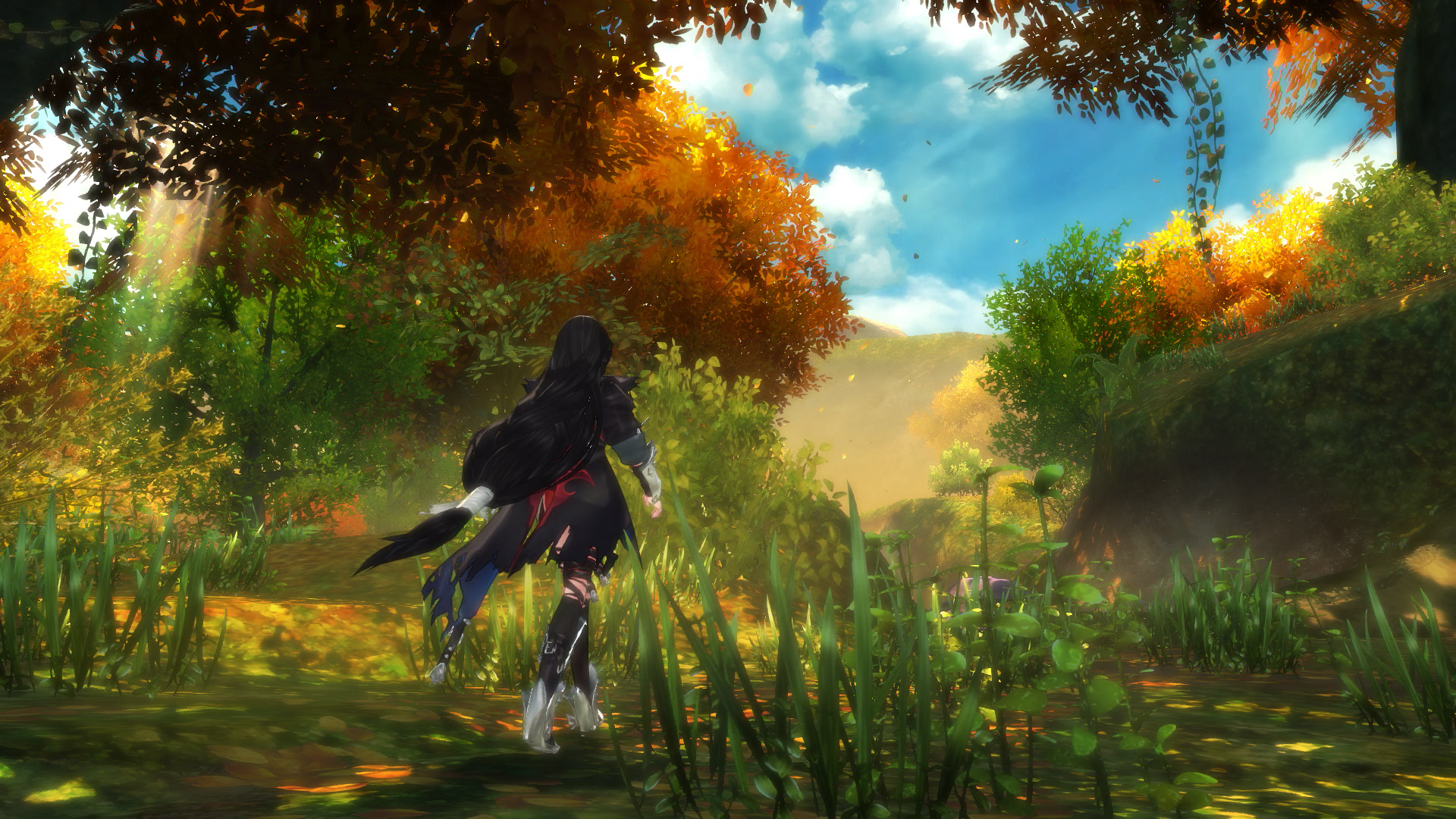
Where it gets a bit muddy is in towns and dungeons. Most of the towns are port towns (the main method of travel in the game is pirate ship), so the sameness there is sort of understandable.
Inside dungeons things are a bit more bleak. I suppose dungeons aren’t supposed to be bright and cheery, so the plain grey stone motif fits.
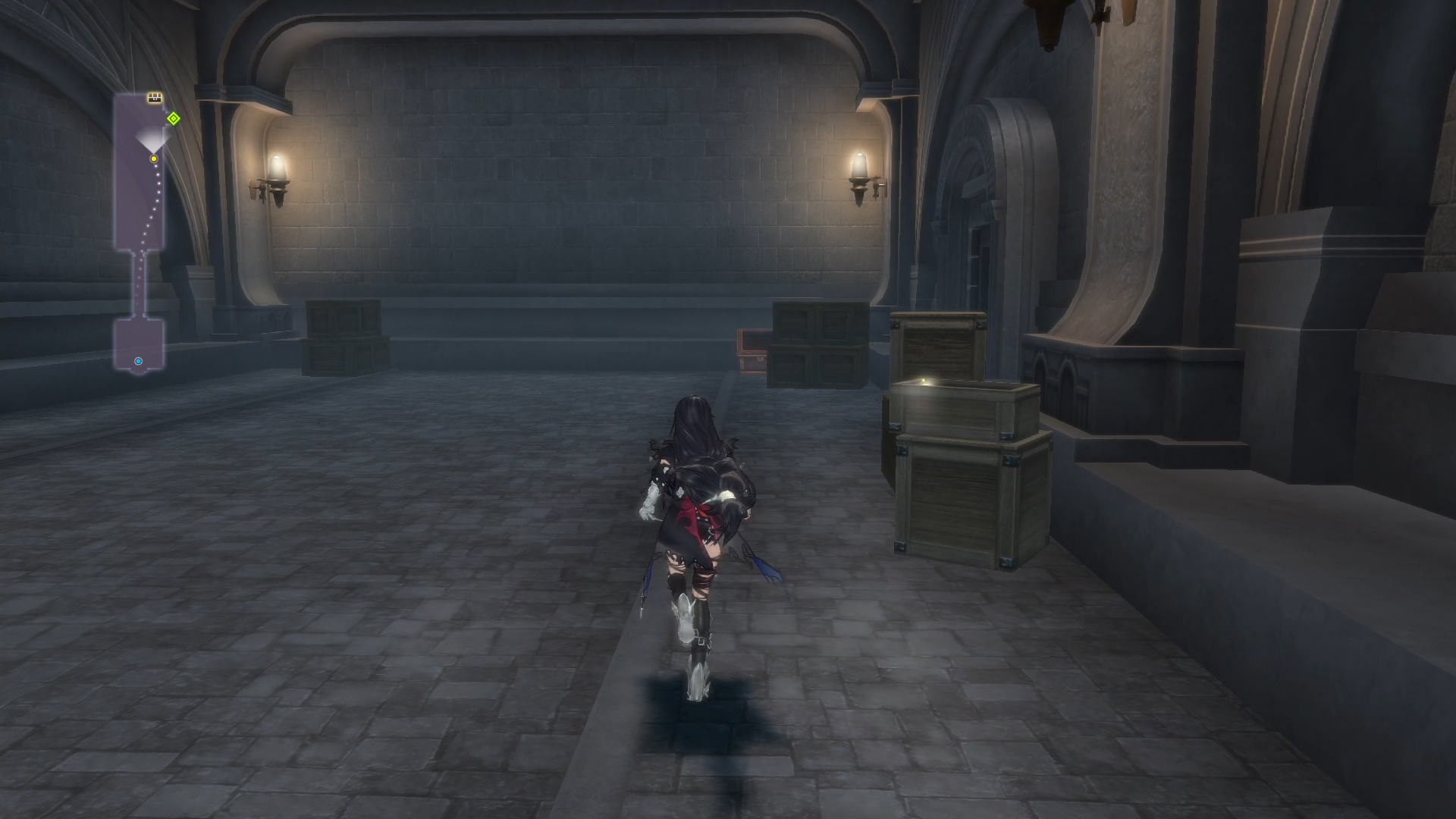
Perhaps it’s not the dungeons themselves, but the fact that I have to keep backtracking through them in order to progress through the game. That grey stone prison in the screenshot above? I had to go through it three different times in 30 hours. The layout stayed the same, but the monsters I was fighting changed. By the time the third trip came around I spent five minutes just staring at the screen and looking sad.
But really, there’s only one thing that should really make you sad in Tales of Berseria, and that’s if you make the wrong choice when presented with the following choice when the game spins up.

NOT THE RIGHT CHOICE.
The English language dialogue in this game is painful. The main characters do a passable job, barring the obligatory super-cutesy mascot character, but the NPCs are just the worst. It sounds like the localisation team just passed a microphone around the office and let people record whatever. Go Japanese here, or be prepared to cringe.
It bears noting that Tales of Berseria is a prequel to 2015’s Tales of Zestiria, set in the distant past of the same world. You don’t need to have played Tales of Zestiria to enjoy Berseria, but you will miss out on plenty of “Ah-ha!” moments. You should probably play Zestiria. It’s good.
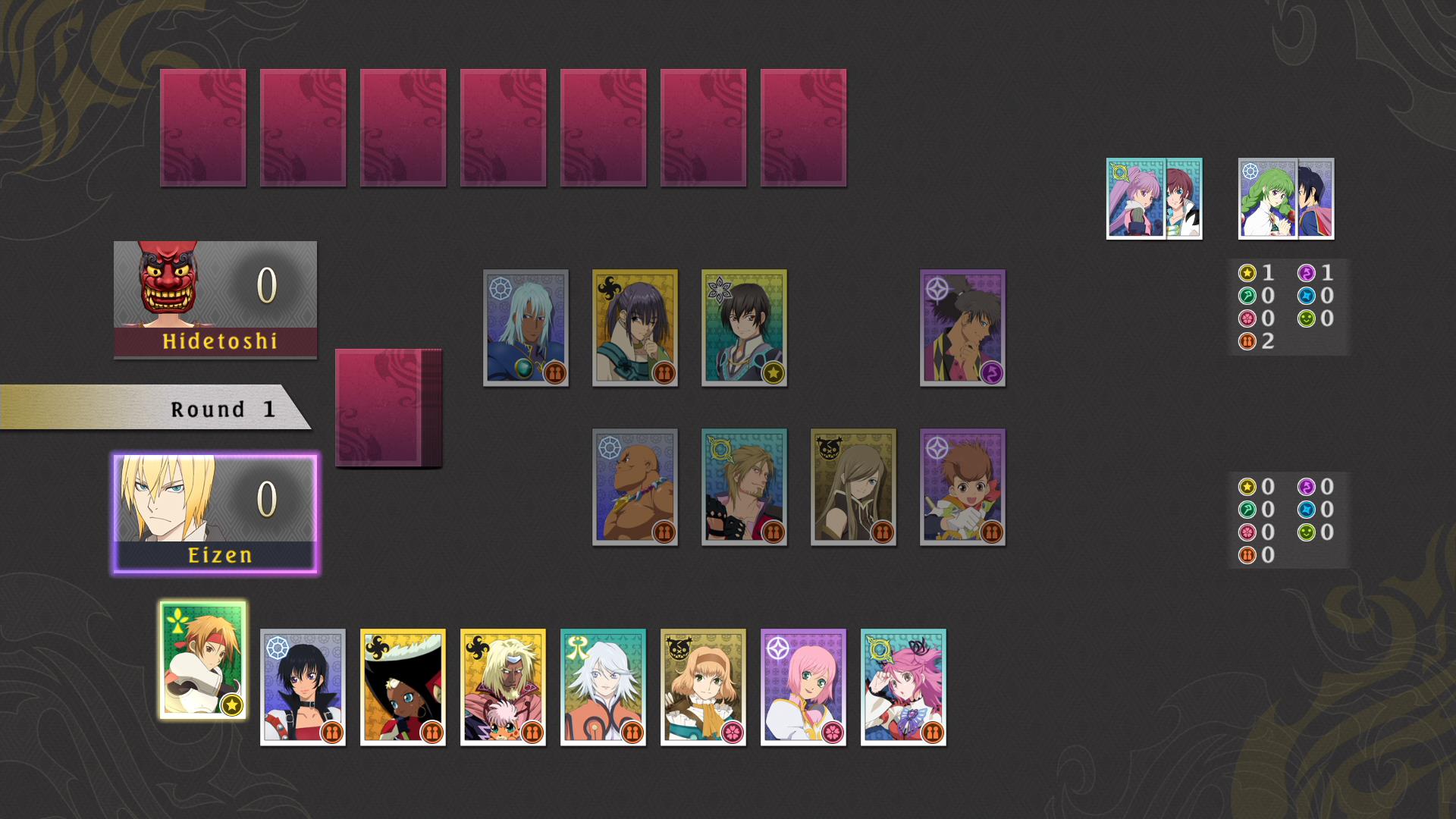
Do not be distracted by the lovely competitive card-matching mini-game.
Like most recent entries in the Tales series, Tales of Berseria is an epic adventure packed with stuff to do. There are mini-games to play, cosmetic items to collect, food to cook and treasures to uncover. Those goofy fun trappings are draped across a much more serious whole this time around, offering welcome respite from a tale that’s not afraid to take its memorable characters to some very dark places.
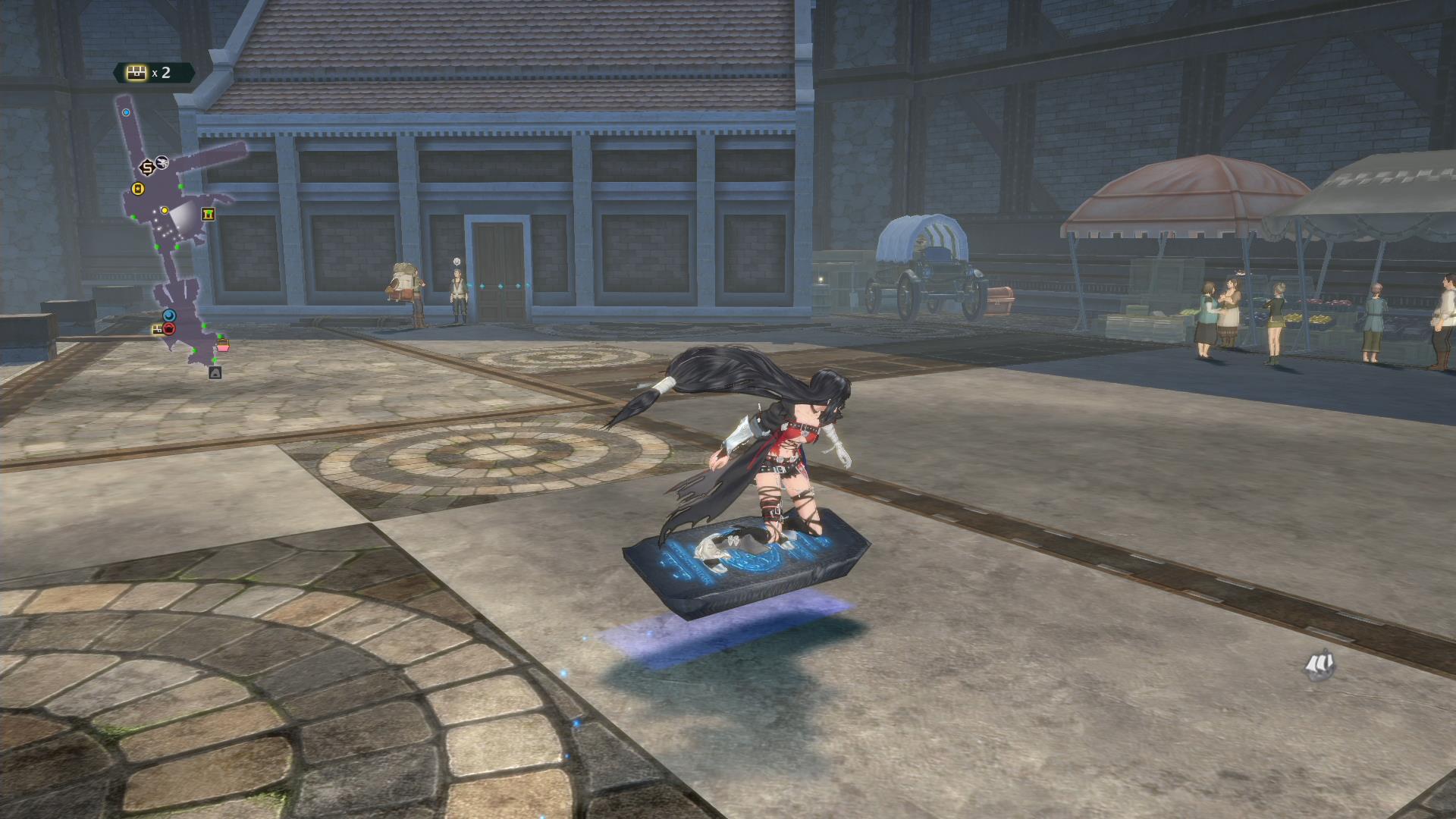
Sometimes on a hoverboard.
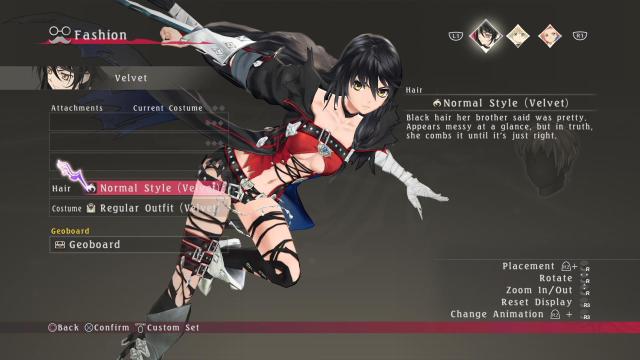
Comments
8 responses to “Tales Of Berseria: The Kotaku Review”
Don’t abandon us Xbox owners Namco!
Xbox still has the honor of having had the best game in the series at least. Only one game, but it was great
Vesperia was on PS3… in Japan only.
Not to mention the only way to play the full version of Vesperia was on in Japanese on the PS3, as the 360 had some of the content, including one of the characters and various Arts, locked on the disk to remain forevermore.
But at least Bamco thanked the 360 users for being beta testers.
True, and it was the better version, but even the X360 Beta version was arguably the best game in the series. Need I remind you that one of the party members was a pipe-smoking dog with an eyepatch? 😛
They just managed to somehow make it even better by adding a pirate girl in the PS3 release.
Thank god that Namco finally are doing dual audio in these games. The dub is really bad.
tales of symphonia was the first game in the series i ever played. had it on the game cube and absolutely loved it, one of my favourite games of all time. and most memorable. the next one i picked up was tales of the abyss for 3ds, but i still havnt finished it after 2 years, things that hold my attention more keep taking over.
would love to give this a bash or zestiria, but i cant sink hours upon hours uncovering everything like i used to in these sort of games.
Just finished this today, it’s a really great game! By the end I was finding myself hooked on the loot system, with the breaking down and upgrading of gear, even if it did take me about 50 hours to get to that point.
I actually quite enjoyed the English dub too, kind of surprised to here people think it’s crap. The party characters were fantastic to me, though I suppose some of the other side characters weren’t great (I know she’s a kid, but jeez, Kamoana grated me so bad.) I prefer Bleach dubbed as well I guess, so I suppose I’m a little broken.